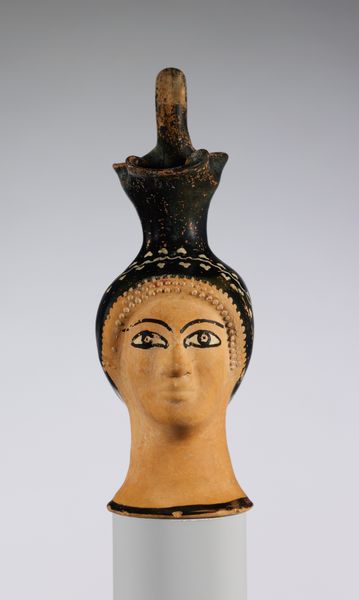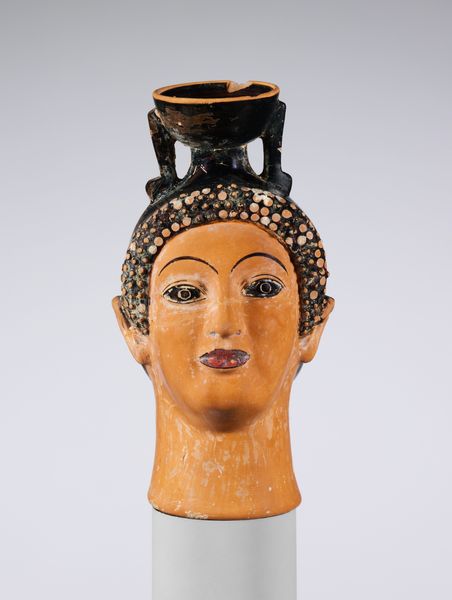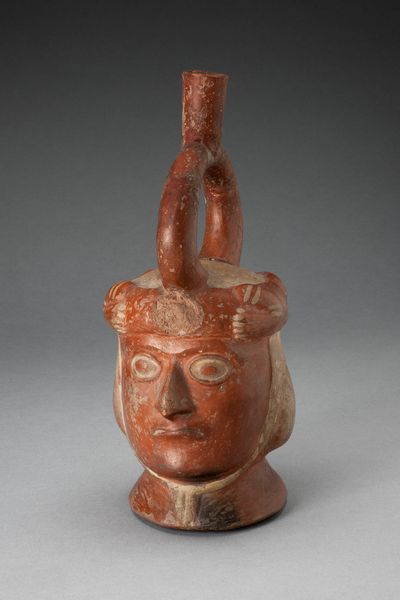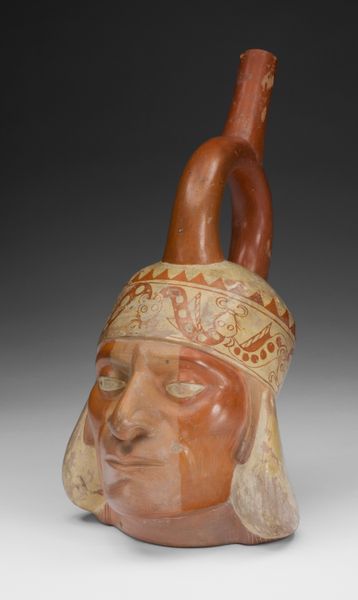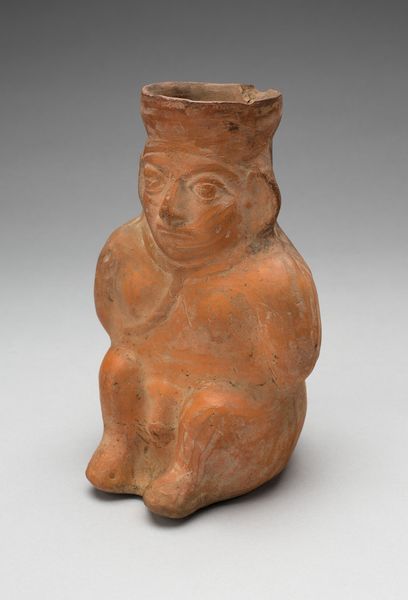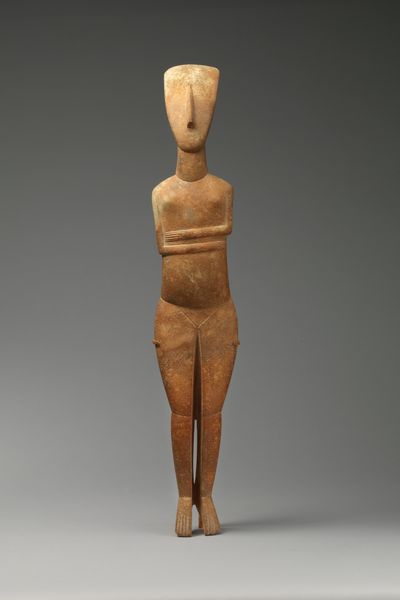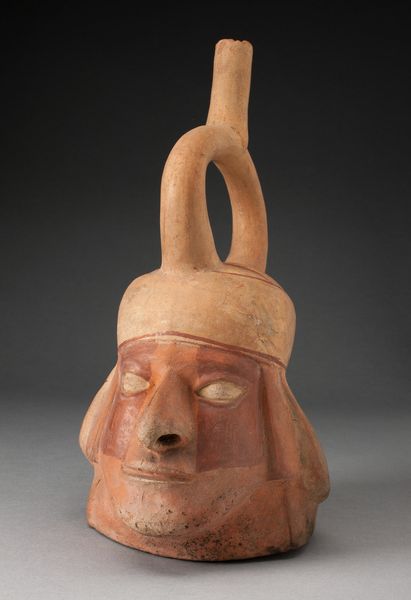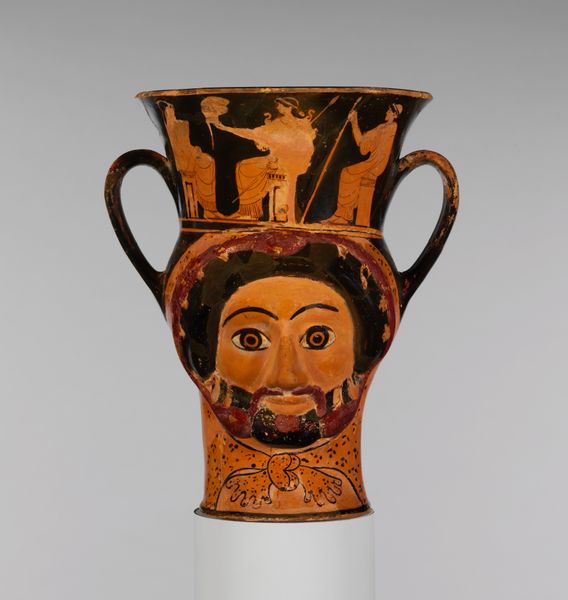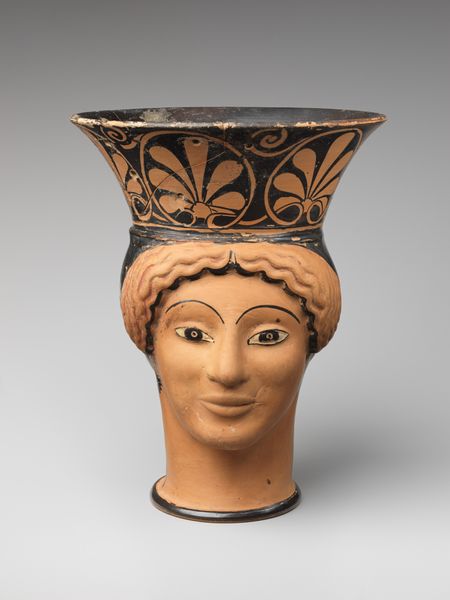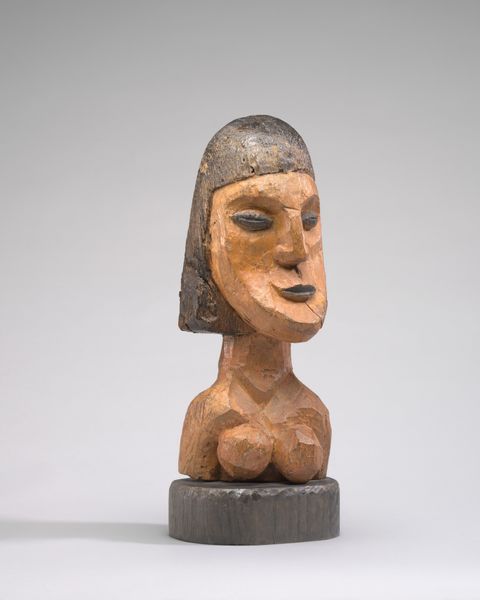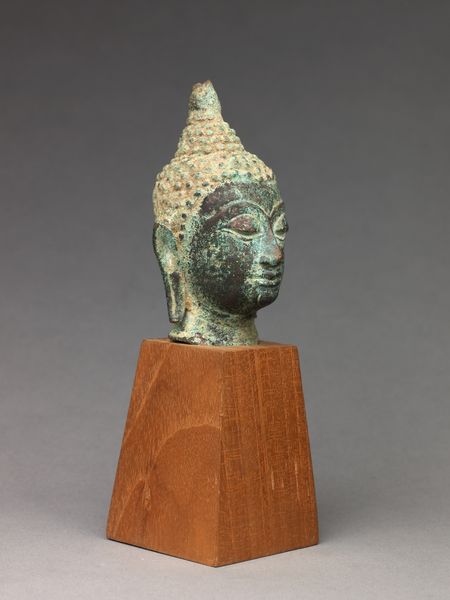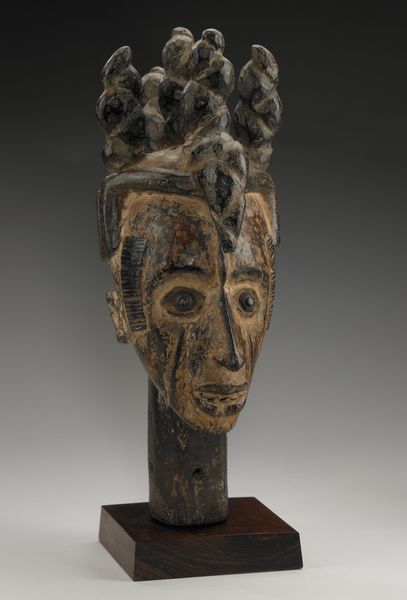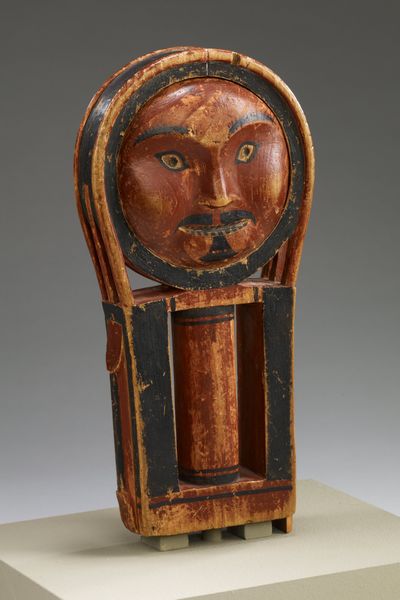
Terracotta oinochoe (jug) in the form of a woman's head 460 BC
0:00
0:00
ceramic, sculpture, terracotta
#
portrait
#
greek-and-roman-art
#
ceramic
#
figuration
#
ancient-mediterranean
#
sculpture
#
terracotta
Dimensions: H. 5 3/8 in. (13.7 cm) diameter 6 1/4 in. (15.9 cm)
Copyright: Public Domain
Curator: What a striking piece. This is a terracotta oinochoe, or jug, crafted in the form of a woman's head around 460 BC. Editor: Immediately, the juxtaposition strikes me. The graceful, almost serene facial features giving way to the stark functionality of the vessel form above. It’s both beautiful and slightly unsettling. Curator: Precisely. Observe how the artist utilizes a limited color palette. The terracotta provides a naturalistic hue for the skin, contrasted by the glossy black paint which delineates the hair or head covering and forms the jug's body. The design is brilliantly economical. Editor: The symbolic implications are rather fascinating, aren't they? Consider the inherent duality: a life-giving vessel shaped as a woman. The act of pouring, typically associated with female servitude in that period, transforms into an almost sacred act. Curator: I agree entirely. The geometry of the face – the carefully placed eyes, the subtle curvature of the lips – they adhere to a classical ideal of beauty, even while constrained by the practical needs of the object. It adheres to the Golden Ratio principles quite subtly. Editor: The almond-shaped eyes feel incredibly weighty. The dark outline creates an illusion of depth, almost as if she's gazing into something beyond our immediate view. What kind of emotions would a classical audience ascribe to that gaze? Curator: That's the magic, isn't it? Despite being an object of utilitarian purpose, the artist has invested it with profound presence. Its aesthetic elements exist in symbiosis with functional ones. Editor: I suppose we’re left to consider how cultural attitudes toward beauty and servitude intertwined in the daily lives of those using such objects. Did it offer empowerment or perpetuate societal constraints? Food for thought, indeed. Curator: Yes, absolutely. Its power as a physical object is enhanced immeasurably by this unique aesthetic structure. Editor: I'll certainly think of this piece quite differently now, having contemplated the intersection of its structure and cultural echoes. Thank you for highlighting that.
Comments
No comments
Be the first to comment and join the conversation on the ultimate creative platform.
